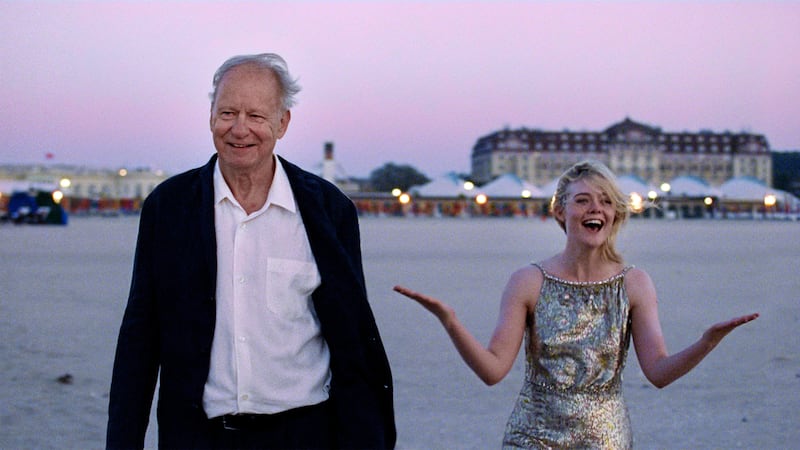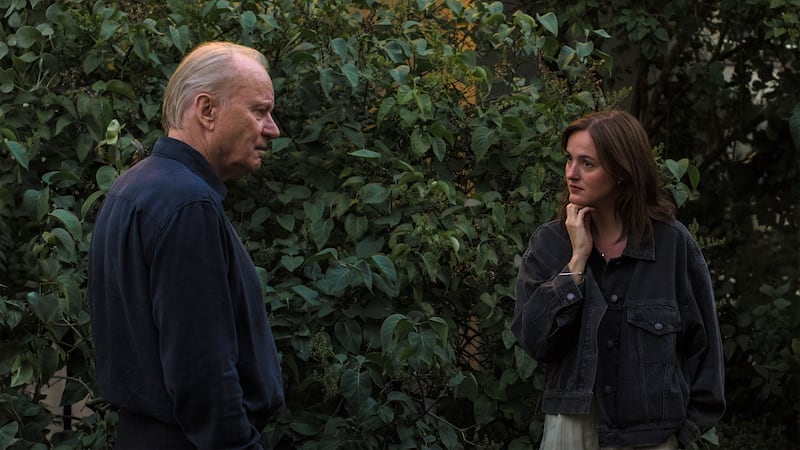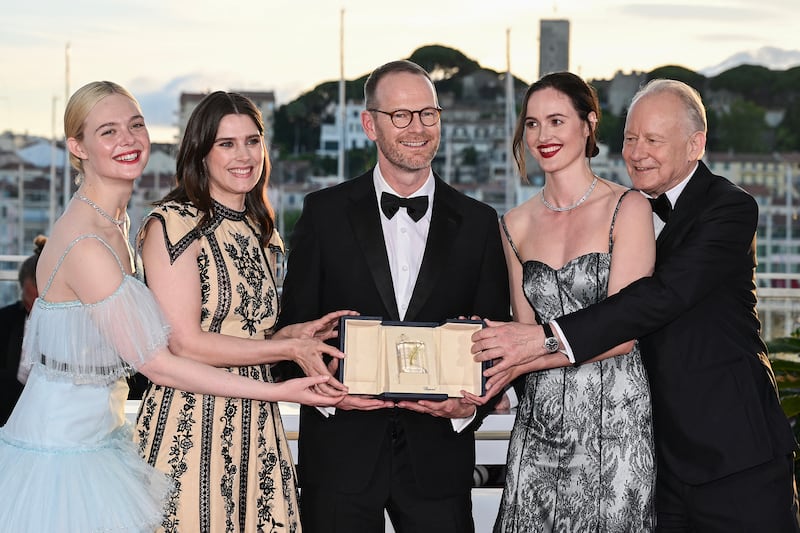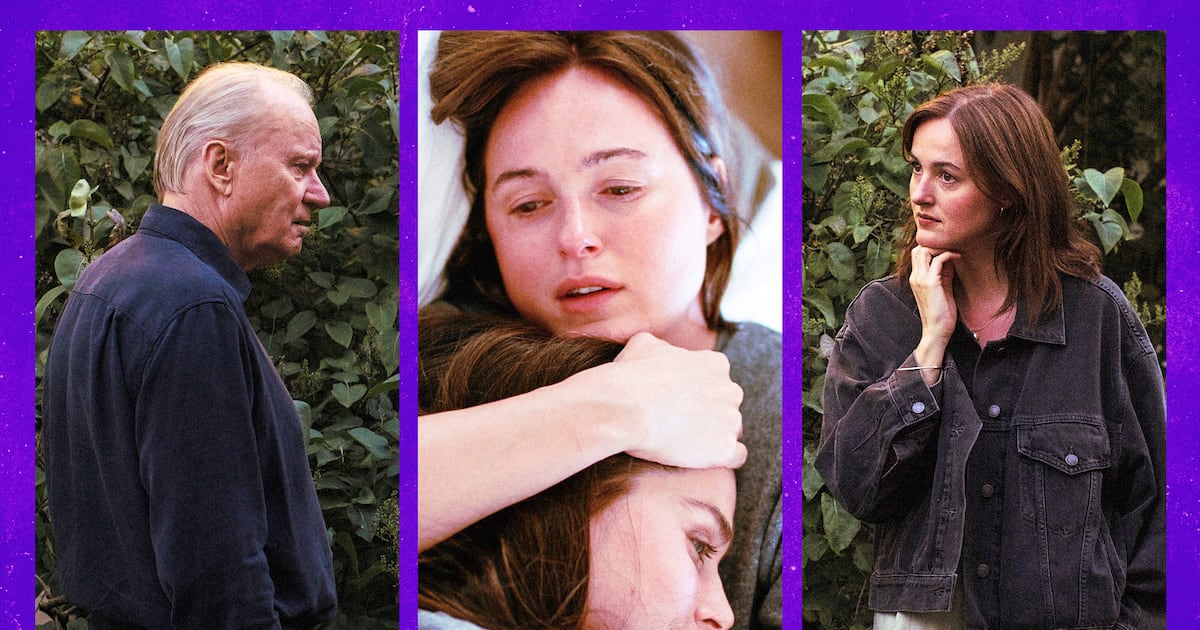Joachim Trier may be cinema’s most delicate and deft dramatist—a writer/director whose films are bursting with thorny emotional dynamics that play out in achingly complicated ways.
With Sentimental Value, the 51-year-old Norwegian auteur crafts a lyrical portrait of home as the epicenter of both familial conflict and rapprochement via the story of a reunion that rocks the fragile stability of a father and his two daughters. A tale about an absentee film-director parent and the wounded child who channels her grief, anger, and confusion through performance, it’s a heartbreaking saga of estrangement and art’s capacity for fostering understanding and reconciliation. Even in a crowded end-of-year field, it stands out as one of 2025’s absolute finest.
 Joachim Trier attends the “Sentimental Value” red carpet during the 73rd San Sebastian International Film Festival on Sept. 20, 2025 in San Sebastian, Spain. Juan Naharro Gimenez/WireImage
Joachim Trier attends the “Sentimental Value” red carpet during the 73rd San Sebastian International Film Festival on Sept. 20, 2025 in San Sebastian, Spain. Juan Naharro Gimenez/WireImage
Reteaming him with his The Worst Person in the World headliner Renate Reinsve, Trier’s feature concerns a house that’s been witness to generations of pain, the most recent of which afflicts sisters Nora (Reinsve) and Agnes Borg (Inga Ibsdotter Lilleaas), whose therapist mother has just passed away.
More troubling is the reappearance of their father Gustav (Stellan Skarsgård), who’s been MIA for most of their lives, and who wants to cast Nora, an anxiety-wracked actress, in the lead role of an autobiographical project about his mother’s suicide. Theirs is a bond fraught with unresolved bitterness and fury, and those feelings are exacerbated by Nora’s rejection of her dad’s offer and his ensuing decision to cast American star Rachel Kemp (Elle Fanning) in the part.
While Trier’s framework is straightforward, he and long-time screenwriting partner Eskil Vogt construct Sentimental Value as a memory box that moves freely between then and now, reality and imagination. The elegance of his scripting is matched by his graceful direction and the nimble turns of Reinsve, Lilleaas, and Skarsgård.
With sensitivity and subtlety, the director crafts a Chekhovian tapestry of present domestic dysfunction rooted in an anguished past, in the process capturing the power of the movies to exploit, to reveal, and to heal. It’s arguably his most accomplished and moving work to date.
Now that Sentimental Value is in theaters, we spoke with Trier about his personal connections to his latest, partnering with Skarsgård and Reinsve, and his enduring fondness for working in his native Oslo.
Sentimental Value is about a director working on a film about family trauma. Given your own family’s history in the movies, how autobiographical is your latest?
That’s a great question, and really hard to answer. It’s still a mystery to me how this s–t works, man. To be honest with you, I feel that it’s a blessing to write with someone like Eskil [Vogt], so that together we can create characters that I feel are just far enough removed from me or my personal relations—family and friends or whoever I get inspired by. So that I, on the one hand, don’t have to worry about throwing them under the bus, or being mean to them, because it’s not anyone. It’s a conglomerate of feelings and thoughts.
Then on the other side, not to have to feel that I’m working, I hope, with blind spots of idealization of someone—myself or someone I love. You need enough distance to really have fun. That opens up the great thing, which is that it’s like a boomerang. You send it out, it goes on a journey, and it comes back to you.
 Stellan Skarsgård and Elle Fanning. NEON
Stellan Skarsgård and Elle Fanning. NEON
Given that, like Gustav, you’re a director with two children, was Stellan’s character a vehicle for working out your own anxieties about the pitfalls of being an artist whose work requires a lot of time, energy, and love?
I think my life informs the films, absolutely. An example of that is very much that I had kids recently. My first daughter was born while I was editing The Worst Person in the World, and now I have two kids. Time flies, and I’m very, very, very grateful and happy about having them. Of course, it’s the biggest thing in my life. But you start thinking a lot about these things.
I could see Nora, Renate’s character, as someone I identified a lot with when I was much younger—a workaholic that felt a sense of self through hard work, and the collective, creative thing. I can still understand that, but I can also imagine a version of that turning into Gustav; actually, Gustav and Nora are very similar.
 Renate Reinsve. Nordisk Film
Renate Reinsve. Nordisk Film
Do you also relate to Agnes and Rachel?
Yes. Now I have a family, and I’m also like the younger sister who wants everyone to have a good time. I want to be the peacemaker, you know? So I’m allowed to express myself very personally in indirect ways through characters that are quite remote from myself. Including Elle, and feeling like an outsider.
Her character is wonderful, because at first people maybe think she’s a bit of a joke—oh, she’s a star from Hollywood—but no, she’s actually a very pivotal character. She’s someone who’s a catalyst for all of them, and has a lot of integrity, it turns out! [laughs] I know that feeling of not wanting to do the wrong film, staying in control of how you want it to be real and personal, and having to step away if it’s not the right thing. I can really identify with that.
All of a sudden, I’m like, hey, I’m allowed to be all these people and none of them are me!
Stellan is obviously a world-cinema giant, and I know you worked hard to get him to participate. Was he the person you were thinking about from the start? Or is writing with a particular actor in mind a dangerous proposition?
To be honest with you, we knew we had Renate. We wrote for her; she was there before the idea was even born. I wanted her to be Nora and to have a sister. It was exciting to have Renata, and to know that she had aged a little bit, and is more mature now, than when we started developing. Unlike The Worst Person in the World, it’s a more grown-up character, and she does that so well, as we see in the film.
Stellan came in early in the writing room as well. When we had the story structure down, I was like, dammit, that’s going to be an exciting character, and he was immediately someone I thought about. Then I needed to secure him, to keep faith in the film. There is this thing where you want as many elements in place to have the faith, and then there are a few big things that need to be sold before you shoot. And I needed Stellan.
I met him and somehow persuaded him to come join us, but now he tells this sweet story that he was awaiting my call for years [laughs]. That’s very generous, I have to say, but I think the truth is that he understood why I needed him. I think he felt somehow seen, and I hope and believe that’s the case. And that this collaboration also meant something to him, as it did for me. I’m really, really happy he accepted.
 Stellan Skarsgård and Renate Reinsve in Sentimental Value. NEON
Stellan Skarsgård and Renate Reinsve in Sentimental Value. NEON
The Borg home is a vital part of the film. Was it difficult to find the right house? And was making it a central character the idea from the start?
It actually wasn’t. But when it occurred to us, it became such a strong force in the story because it let us deal with memory and the staging of memories. At least in my mind, memories are very space-specific. You love the vibe of your kitchen, and that’s an account of millions of mornings with different weather, but you can go between them like leaves, or like pages. You can see the space change, and your memory is elastic, but the space is pretty much specific. To play with that idea in a film is interesting to me.
I said to the producers, this is going to get expensive—get the best location scouts we got and send them out! We’re going to look at every house in Oslo. And we kind of did. Then it turned out, it was a house two blocks away from me that I’d actually shot in before [laughs]. I was like, can I just please go look at that again? Because this is it—sorry everyone, forgive me [laughs]. But everyone was just relieved because they knew how important it was. I took Eskil there, and we tailored the script to that house.
Whereas Stellan and Renate are big names, Inga Ibsdotter Lilleaas is not—and yet that seems likely to change courtesy of Sentimental Value. How did you settle on her, and was there ever a concern that she might be overwhelmed, on screen, by her illustrious co-stars?
She came in a bit like the house: along with many, many, many people. I saw the tapes—the first round, I wasn’t even there—and Inga’s close-ups were incredible. I was drawn in. Wow, what star power! That face, that earnest truthfulness! And it continued every casting session. I put her with the other actors that I had, and with Renata, and at some point they hugged and their hair got close to each other, and it was a very similar color, and it felt like they were cut from the same cloth, but quite different. I thought, they could be sisters.
 Inga Ibsdotter Lilleaas and Elle Fanning. NEON
Inga Ibsdotter Lilleaas and Elle Fanning. NEON
How exciting is it to “discover” (at least in terms of film) someone like Inga?
As a director, you feel very close to your actors, and you feel responsible for them. When they see the film, and the world sees the film, you want them to feel that you did good for them. Inga’s got a lot on the line because she’s coming to Cannes, and we all have our dresses on, and she’s never been in that world; she comes from theater, and she’s done a few parts, but not like this.
We’re in the Cannes auditorium, and people are giving this long applause, and there’s a camera that moves between us, that you see on the screen, because it’s an auditorium with 2,300 people. Everyone’s looking at the screen, and the camera goes from Renata, to Stellan, and when it comes to Inga, the room explodes! She’s the discovery, right? Everyone yells, and I tear up. It really moved me, because I felt this relief. They see her. They see what I’ve seen.
The way Elle’s character Rachel joins Gustav’s film is a lot like the way Elle fits into yours. Was it important to maintain an on-set sense that Elle was an outsider in your Oslo habitat, so that would bleed into her performance?
Elle came to Oslo, and it was very meta. I met her the first time physically in the house, around the same table, where she and Gustav do the table read in the film. We did that purposefully, and she comes with a driver, she walks in, I say hello, and we just started laughing, because she knows the script. We had talked a lot on Zoom, but we hadn’t had the chance to meet properly. We embraced, sat down on chairs, and it felt immediately like we were friends laughing at the silliness of the situation.
 Director and screenwriter Joachim Trier, center, poses with (from L) Elle Fanning, Inga Ibsdotter Lilleaas, Renate Reinsve and Stellan Skarsgard after winning the Grand Prix for “Sentimental Value” at the 78th Cannes Film Festival in Cannes, France, on May 24, 2025. Miguel Medina/AFP via Getty Images
Director and screenwriter Joachim Trier, center, poses with (from L) Elle Fanning, Inga Ibsdotter Lilleaas, Renate Reinsve and Stellan Skarsgard after winning the Grand Prix for “Sentimental Value” at the 78th Cannes Film Festival in Cannes, France, on May 24, 2025. Miguel Medina/AFP via Getty Images
Aside from Louder than Bombs, you’ve stuck close to Oslo. Does continuing to work there provide you with a freedom you fear you’d lose if you dipped your toes more fully in Hollywood?
First off, at the moment, there’s a story about how I made a mistake by making Louder than Bombs. To be very frank with you, I’m super happy about that film. I know its reception. I was hurt, and the film was hurt, by the fact that people wanted me to continue to do the Oslo thing that I did with Reprise and Oslo, August 31st. And in a way, that’s a compliment too, and I returned to that a bit, specifically with The Worst Person in the World; I went back into that vibe a bit more, and I love that too.
But I felt that with Louder than Bombs, I learned so much. I am so proud of it. I got to work with Jesse [Eisenberg] and Devin Druid, who’s an amazing actor, and Gabriel Byrne, and last but not least, Isabelle Huppert. To be on set with them, it made me a much better director. The team I worked with was extraordinary, and it was primarily European financed, so I didn’t actually have any creative obstacles outside of the fact that, you know, I didn’t maybe get as much time to shoot as I would in Europe, because you get more time to shoot for your money. That was tough, but I had good actors, and I felt we did a good film.
This is the first time I’m saying this on the record in the U.S., by the way, just so you know. Because I feel like a lot of people want to tell this narrative of like, it’s my failure. But I don’t feel that. And I’m not saying you’re implying that! But I’ve heard people refer to it that way, and now The Guardian did an article that was kind of defending it, and I was like, yes! Eskil wrote me and sent it to me, like goddamnit, they’re starting to get it!
Did Louder than Bombs motivate you to return to Oslo?
You’re right that I’m working in a world of a lot of creative freedom, and the risk is not a one-stop-shop studio. But I want to give praise to Warner Brothers for making the masterpiece, One Battle After Another—a really great film. I’m not against the greatest of American films. I f—ing love them. I think they’re often the best films of the year. I’m not one of these arthouse guys who think that all of that is s–t—not at all! It’s rather the opposite.
But, for me, with the kinds of films I’m making, I’m allowed to develop them and create them and shoot them with complete control and elasticity around my cast, like with Inga. No one asked me to choose someone for the money. I can cut as long as I want, and I show it to a lot of people because no one’s going to demand that I change the film, even though I take notes and talk to everyone. So I feel really at ease with the system I’m working in.
